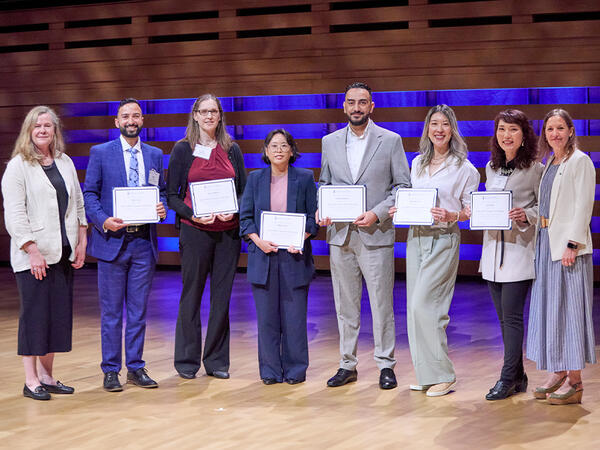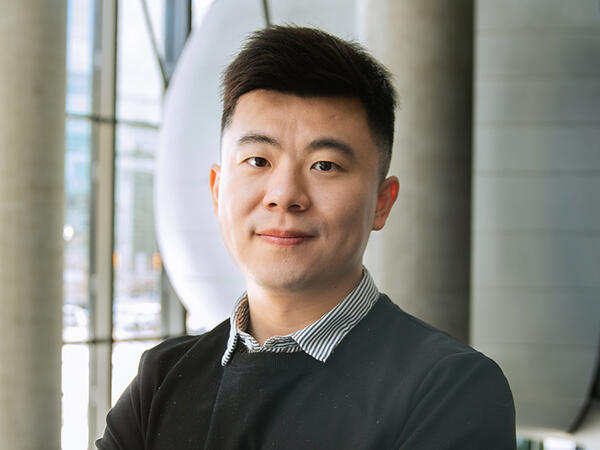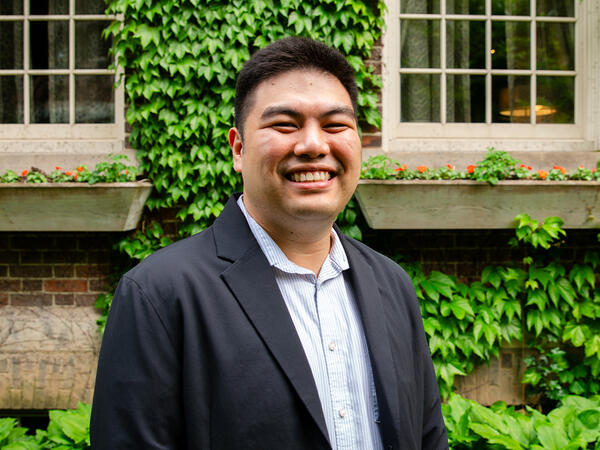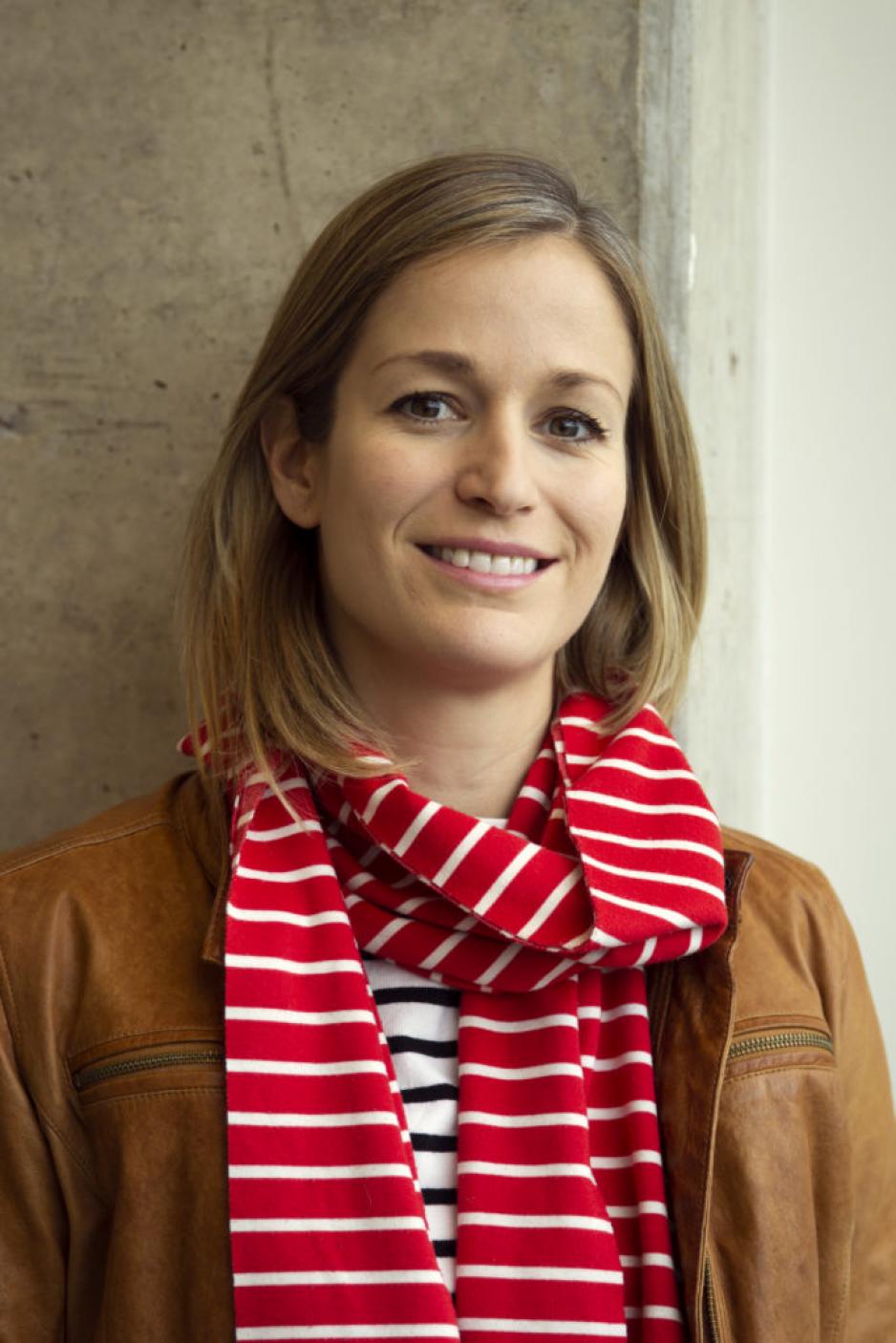For many Canadians, the steps between diagnoses and treatment are often out of sight and mind, yet behind-the-scenes good communication between different health care professionals is essential to how patients receive the right care.
Exploring the complex relationships between different professions in the Canadian healthcare system has generated a wealth of interesting research, but in a landscape full of experts, how do different medical professions find and establish their place?
Focusing on the relationship between physicians and pharmacists, Elise Paradis, Assistant Professor at the Leslie Dan Faculty of Pharmacy, aims to explore this exact question.
Partnering with Mahan Kulasegaram, Assistant Professor in the Department of Family & Community Medicine at U of T, and supported by Daniel Miller, a Research Assistant, Paradis has recently completed a study that sheds light on how pharmacy students develop their professional identity and establish their place within the healthcare sector.
Teaching assertiveness
Replicating the 1995 Bruce L. Lambert study exploring pharmacist-physician interaction, Paradis and Kulasegaram’s research follows a cohort of Leslie Dan Faculty of Pharmacy students from first year to third, drawing on Brown and Levinson’s theory of politeness to gain insight on the factors that influence pharmacists’ messages to physicians.
For Brown and Levinson, politeness is a means to investigate a key underlying variable: what people who communicate perceive as the social distance or hierarchy among them. More succinctly, says Paradis, “The more you feel inferior to someone, the more polite you are; conversely, the more superior, the less polite.”
As part of this study, students were asked to provide a response to a mock scenario where a physician (Dr. Jones) prescribed a medication that would cause an allergic reaction in their patient (Mr. Smith). The student must alert the physician of the allergy and provide an alternative, knowing that the physician had missed the allergy twice before.
“On average, students demonstrated a decrease in “politeness” in their responses to the physician from the first data point to the last” says Paradis, who also holds a Canada Research Chair in Collaborative Healthcare Practice. “As students continue to grow, you see an increase in assertiveness characterized by students acting less submissive or apologetic to physicians in their allergy reports.”
In comparison to the 1995 study results, the recent cohort demonstrates less polite responses overall, and shows more confidence in making drug recommendations. Paradis believes this finding is the result of a curriculum that teaches assertiveness and ownership of pharmacists’ area of expertise.
“You can imagine a pharmacy curriculum that reinforces a sense of inferiority under physicians would demonstrate an increase in overly polite responses, but that’s not the case here,” says Paradis. “This leads us to believe that the formal curriculum, as well as what is learned during rotations, socializes students to be more confident in their position, and therefore more assertive in their responses.”
Sharing results
After three years of involvement, students had the opportunity to view and discuss results with Paradis and her team, an aspect of the study that was part of the initial design.
“The further I progressed in the program, the shorter and more direct my responses became” says William Lu, a third year PharmD student, “through classes, training and EPE’s, I’ve realized that time is a luxury and, like many professionals, pharmacists don’t have the time to meander around the point.”
Paradis suggests this type of exercise does more than allow students to reflect on personal and professional growth: it lets them identify the aspects of the curriculum that helped them most.
“For me, the interprofessional education aspect of the curriculum helped identify my space in the health care system” says Rebecca Wright, a third year PharmD student. “It helped me discover where my role as a pharmacist overlaps with other healthcare professions, as well as where pharmacists and other professions may disagree and where gaps exist in the system.”
Next Steps
While Paradis and Kulasegaram’s study provides contemporary insight on the development of professional identity for pharmacy students, it also calls attention to the wider question of how professional programs are socializing their students to interact with other professions, a question that continues to be explored by Paradis and Kulasegaram.
More News
Image

Seven pharmacists recognized as APPE Preceptors of the Year
Preceptor of the Year Awards recognize excellence in teaching and mentorship.
Read More
Image

Stem Cell Network announces $33M to advance 36 regenerative medicine research projects and clinical trials
Assistant Professor Bowen Li has received funding to advance gene therapy research with a focus on cystic fibrosis and cardiac regeneration.
Read More
Image

PharmD for Pharmacists grad gains key clinical skills to expand career
Albert Villaluna complemented industry experience with clinical experiential courses that showed breadth of pharmacy practice in Canada.
Read More
